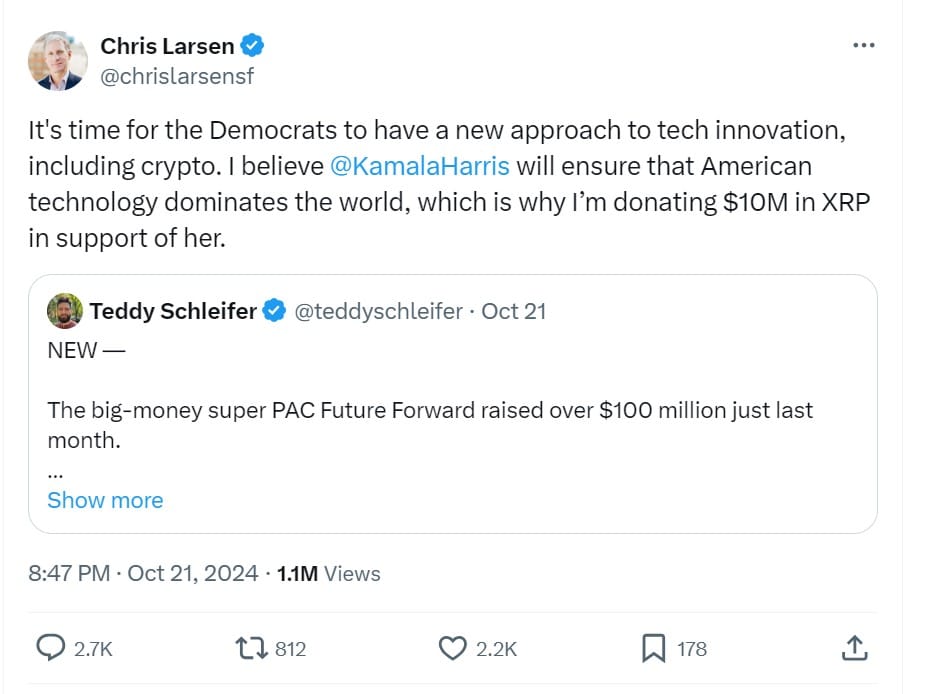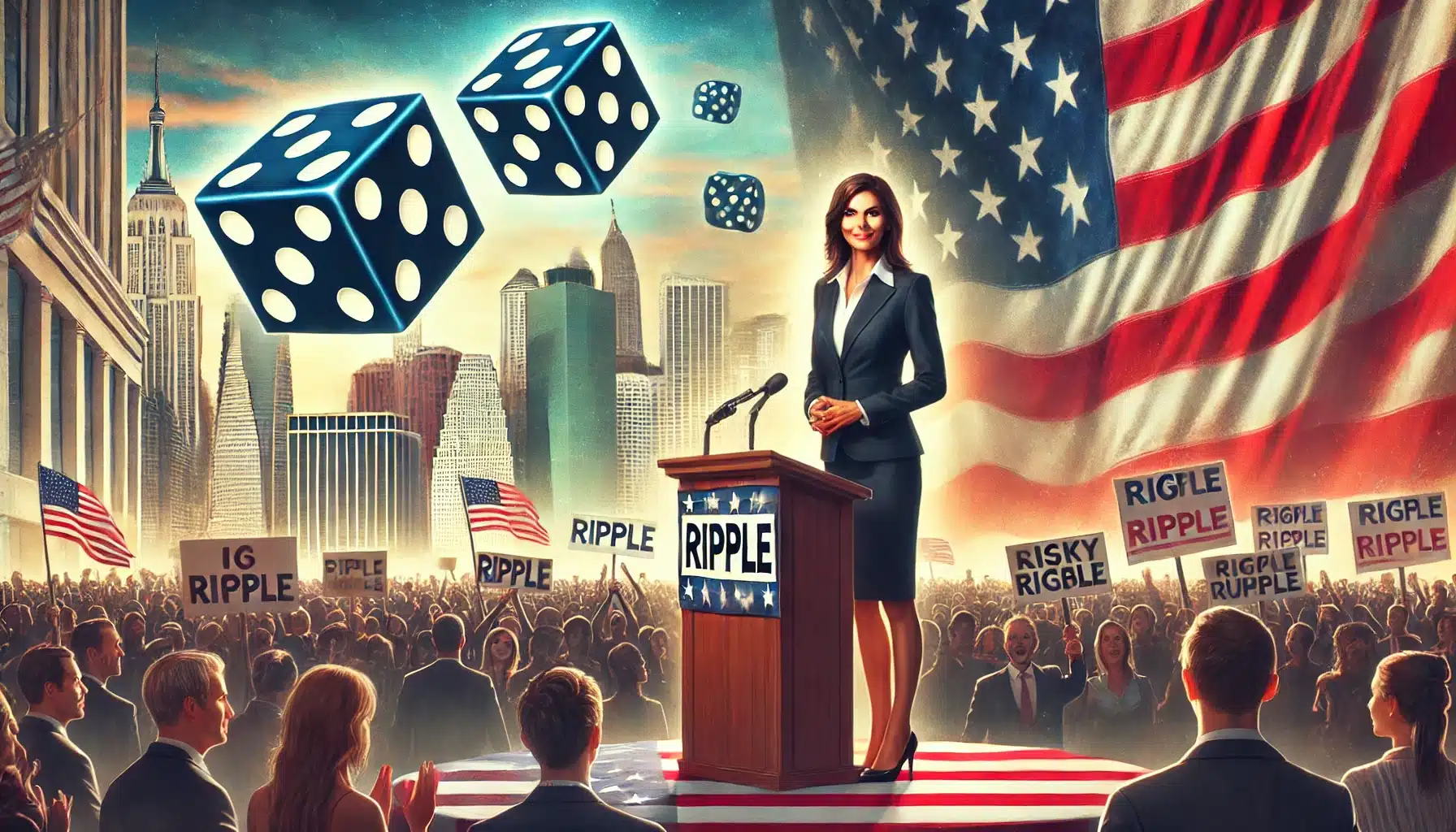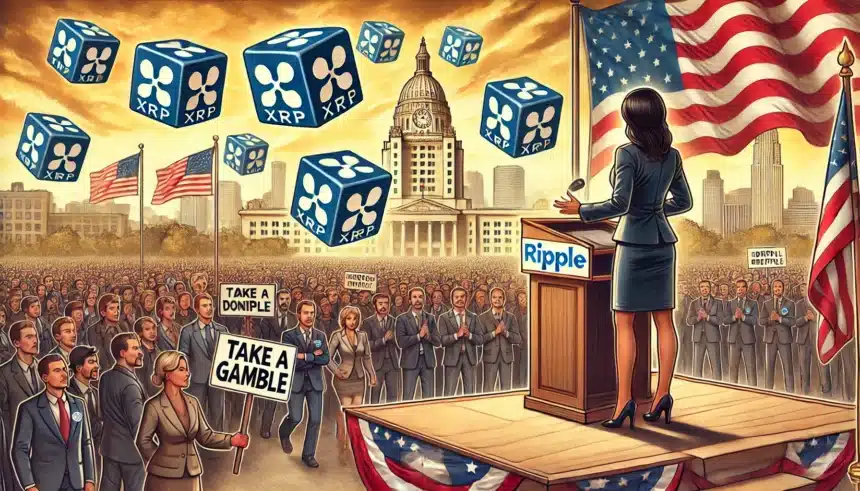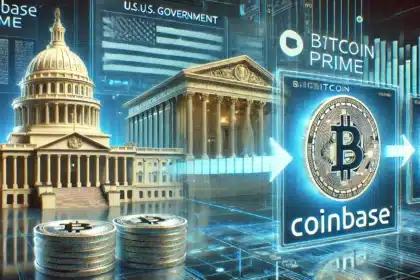Chris Larsen, the co-founder of Ripple, who is renowned in cryptocurrency circles, provoked a stir by gifting a sizable contribution of $10 million in XRP tokens to back Vice President Kamala Harris’s bid for the 2024 presidential election. Larsen’s mammoth donation, meant to bolster what he frames as a “fresh outlook on technological progress,” has sparked a fervid disputation among XRP supporters as some dispute the priorities and involvement in political affiliations within the crypto world.

Others maintain that civic participation is fitting and declare that progressive agendas tend to nurture climates ideal for technological flowering. Despite dissenting outlooks, many respect Larsen’s persevering dedication to the development of inclusive financial solutions.
Larsen’s Donation: A Bold Political Move
Announced via a post on X, the substantial donation from Larsen to Future Forward USA PAC made waves in the crypto industry. It came after an earlier sizable contribution of $1.75 million, bringing his total backing for Harris’s campaign to nearly $12 million, rendering him one of the primary financial supporters from the digital currency sector. His decision was framed as part of a wider initiative to ensure “American technology reigns worldwide” should Harris become president.

However, not all XRP community members approved of this move. Several questioned if the funds may have been better spent assisting XRP-centric undertakings or alleviating worries in the market. Others argued that such political donations would help move pro-crypto policies forward. While debates continued around targeted spending and transparency, most agreed on the goal of shaping regulation to support innovation.
Community Backlash: XRP Holders Question Priorities
Criticism swiftly surfaced after the declaration, with notable identities in the XRP community voicing annoyance. Perhaps the loudest dissenter was cryptocurrency examiner XRP, who asserted that allocating the $10 million to projects on the XRP Ledger currently developing on the distributed ledger would have proven a more fruitful use of funds. This viewpoint is echoed by additional members of the group, who reason that injecting such a massive amount could have furnished much-desired “cost relief” amid persisting market unpredictability.

Meanwhile, proponents contend that the contribution will prove beneficial in the long run by fostering subsequent adoption and bringing more users to the network. Only time will tell which perspective has more credence, yet discussions on effective allocation of capital to maximize support for the technology continue within its fiery constituency.
Many XRP holders view the political donation as a misallocation of resources, especially given the challenging regulatory environment Ripple and the broader cryptocurrency sector face. With regulatory scrutiny at an all-time high, some argue that funding innovation and ensuring the survival and growth of XRP should be a priority over political contributions.
Ripple’s Leadership Response: Defending the Decision
In response to the eruption of disapproval, Ripple’s chief executive, Brad Garlinghouse, took to X, defending Larsen’s right to endorse any candidate of his selection. Garlinghouse reemphasized Ripple’s commitment to bipartisan involvement, accentuating the importance of pro-crypto policies over political alignments. He also criticized the current leadership for its “misguided war on crypto,” suggesting that any political candidate who advocates for more crypto-friendly regulatory surroundings is worthy of attention.
This transfer by Larsen comes during a pivotal moment for the cryptocurrency sector, with increasing government policy and a set of high-profile legal challenges. Despite Larsen’s significant contribution to Harris’s campaign, his movements have elevated issues about the impact of political donations on the coming regulations surrounding crypto.
Ripple’s Political Strategy: Bipartisanship Amid Division
While Larsen’s sizeable contribution aided Harris’ campaign aims, Ripple’s overarching strategy stays nonpartisan. Garlinghouse has emphasized that Ripple interacts with Democrats and Republicans alike to promote both blockchain evolution and cryptocurrency progress. The company has navigated tricky ties with U.S. watchdogs too, such as an ongoing lawful struggle with the Securities and Exchange Commission. Accordingly, Ripple heads think bipartisan political involvement is key for what’s ahead in the industry.
However, the appearance of such a mammoth present to a single nominee has prompted skepticism. Some community members worry that aligning too tightly with one political figure risks alienating potential allies or giving an impression that Ripple picks sides, potentially jeopardizing bipartisan efforts going forward.

Conclusion: A Divisive Decision for Ripple and XRP
Chris Larsen’s monumental contribution to Kamala Harris’s failed presidential run has inflamed discord among the XRP faithful. While Larsen frames the sizable sum as an offering for technological progress in the future of the United States, many XRPers interogate whether it proved to be the most prudent use of assets. As Ripple navigates regulatory hurdles and strives to foster broader adoption of XRP, the choice highlights persisting tensions between involvement in politics and meeting community hopes. With the next American election fast approaching, the impact—and broader discussion sparked—of Larsen’s massive donation will likely persist in influencing dialog on XRP’s path ahead and the crypto sector’s destiny at large.
Stay tuned to TheBITJournal and keep an eye on Crypto’s updates. Follow us on Twitter and LinkedIn, and join our Telegram channel to be instantly informed about breaking news!





























